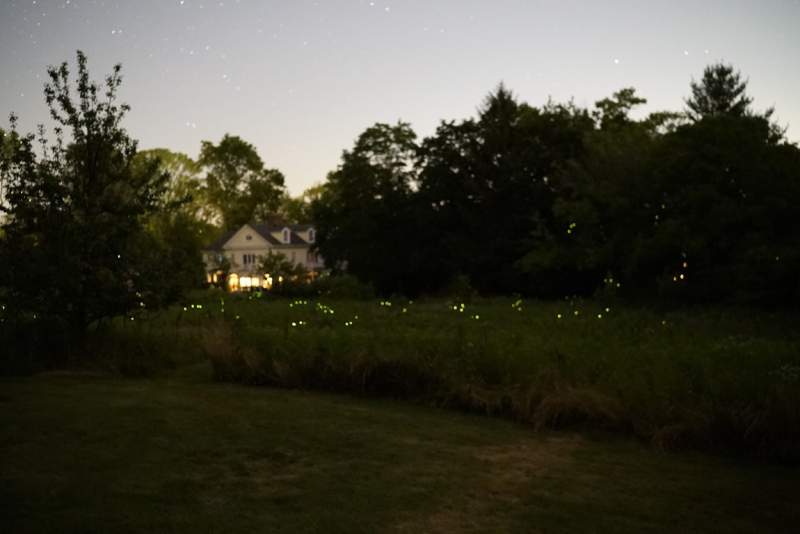The Firefly Conservation Handbook

click to enlarge photo
Important Factors For Creating A Firefly Sanctuary
Also a habitat for monarch butterflies and pollinators
1. Control of the Watershed
Pure water is critical with no fertilizer, pesticide or herbicide. Be aware that there can be chemical runoff from uphill neighboring properties.
2. Ecotone
Choose a meadow that is surrounded by a mixture of deciduous and pine trees. It blocks light pollution and remember the males need trees to look for the females in the tops of the grasses in the meadow. A source of water is a plus and a nearby river, pond or wetland works well.
3. No Light Pollution
Floodlights on nearby houses or in trees disrupt the mating of the fireflies. Pine trees blocking streetlights work well.
4. Food Chain
It’s all about feeding the firefly larva their favorite foods which are snails, slugs and worms. In order to do that you grow and feed the snails their favorite food which is native asters. The combination of asters, goldenrod, Joe Pye weed and Black Eyed Susans works well. The meadow will also be full of color and double as a pollinator pathway. We also plant milkweed because we like to raise monarch butterflies and monarch caterpillars can only eat milkweed. I have seen fireflies eat milkweed pollen but in general they eat nothing in their short lives as adults.
5. Fallen Logs and Leaf Piles
The woods should be left uncleared as the fireflies winter over under logs and leaf litter and in the ground.
6. Meadow Cutting
The native flowers must bloom to be effective. The meadow can be cut only once in the late fall or winter. Some land trusts mow in late winter on frozen ground which allows the migrating and wintering birds to continue to forage the meadow’s seeds.
7. Existing Fireflies
If possible choose a site with a small preexisting population of Photinus and Photuris fireflies. The management of the food chain can grow the firefly population by 10 times a year because each female lays 100 eggs and fireflies have very few predators. Seeding a site with pregnant females does work, but I believe working with the local population should come first.
8. Parking or Busing
Choosing a site with preexisting infrastructure for parking, trails, and toilets for visitors makes sense where possible, if the site will be open to the public .
9. Viewing
In the northeast firefly viewing is from approximately 9pm to 11pm, from around June 27 to July 10.
10. Culling the Invasive Plants
Because you are cutting the meadow only once a year invasive plants become a problem. Plan on it because it will happen. To keep the food chain working you will require a mechanical plan to deal with porcelain vine, Canada thistle, Asian bittersweet, and Indian hemp. It is time consuming because chemical means of control don’t work in a firefly meadow. It is a labor intensive job. Think spot cutting not spot spraying.
The effort is worth it to be able to share the joy of 10,000 fireflies.
Bill McDonald
October 2022